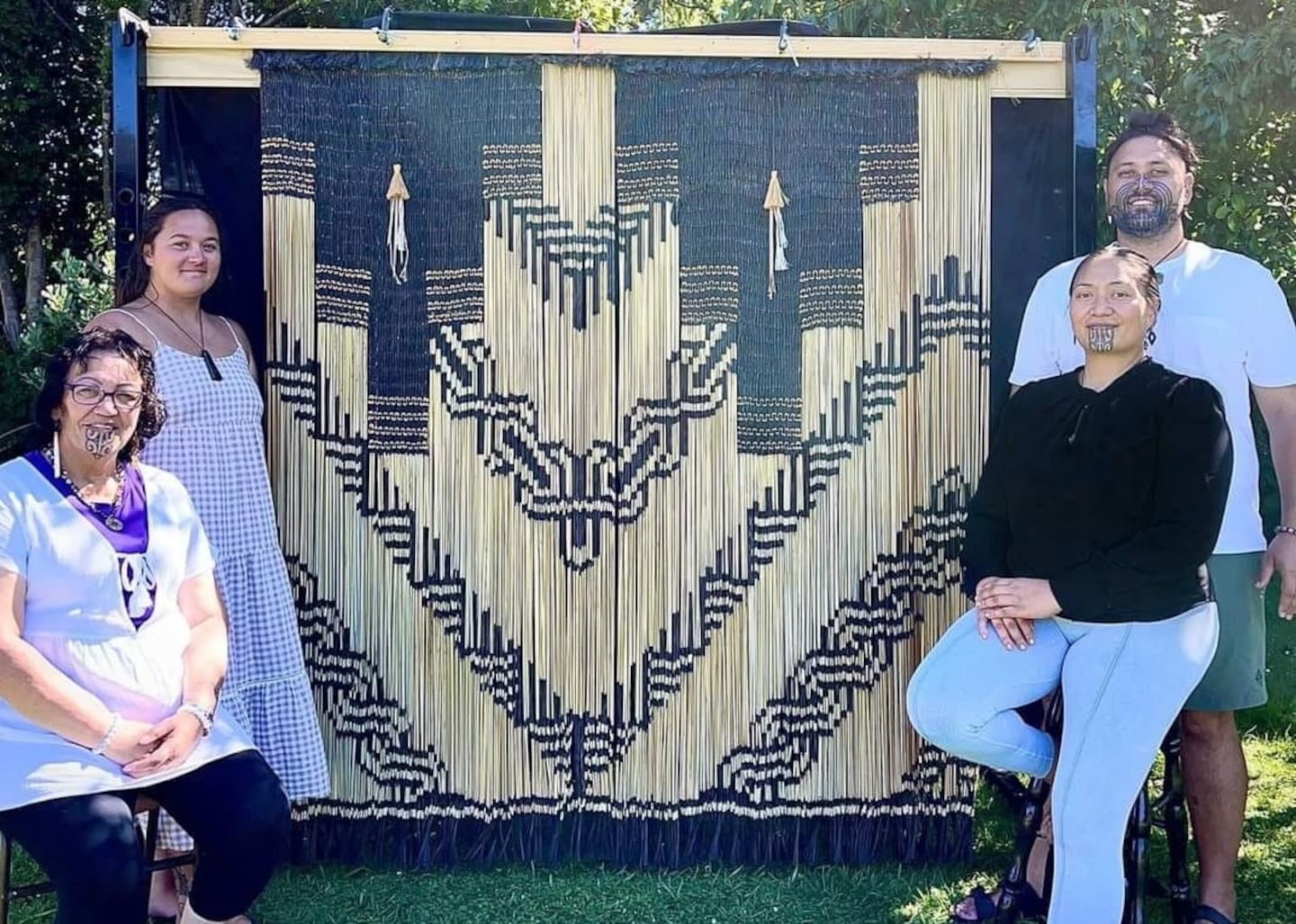A group of Tūwharetoa weavers have created what could be the largest ever piupiu for display at the Biennale of Sydney.
The piupiu is called Punarua and was created by kairaranga (weavers) Hone Bailey, Paehoro Konui, Merānia Heke-Chase and Manu Fox. The group worked up to 12 hours a day over three months.
Lead Kairaranga Hone Bailey, who has close to 100,000 followers on Instagram, documented the process with videos on social media - with one gaining 600,000 views.
Bailey said creating Punarua was like “a diary for my family to see”.
“I never grew up having this in my family. So what I’ve learned has been out of my own pursuits to obtain,” he said.
“I would want to leave something behind for my family ... to rediscover what has existed. They have kuia that wove and they grew up seeing them weave. They’ve passed away and they’ve lost that connection and they have to find it.”
Documenting the process
Bailey’s videos show the complex process the artists went through to create Punarua. The taonga is two by two metres in size, which Bailey said is the biggest piupiu ever made, as far as he’s aware.
“All up we used 1,800 leaves. Weavers would understand if they were to look at the piupiu, that the pattern is irregular. We used about 130 pattern boards to be able to create patterns, so we weren’t able to use the same boards.”
To harvest the harakeke (flax), the group travelled from Turangi to Foxton to find the flax they needed for length.
They also used traditional dyes, harvesting mānuka to make a soaking solution for the harakeke that was boiled in a bathtub. It took four hours to recreate paru (mud) for the dark pattern on the piupiu.
“So the mud is rubbed into [the piupiu] and because of that mānuka tannin, or waiwai, the paru sticks to it and creates a bond, a chemical reaction producing the black colour. Our biggest obstacle in that part was the size of the piupiu and once the mud was in it, it was very heavy for us to move,” Bailey explained.
The Biennale of Sydney
This is the first commissioned project that Bailey has worked on to feature in an art exhibition.
Established in 1973, the Biennale of Sydney is the third oldest biennial in the world and has commissioned works by more than 2,000 artists from more than 130 countries for this year’s event.
Bailey said he had been approached multiple times by the Biennale team before saying yes.
“I don’t really aim at art exhibitions personally. I just enjoy making these taonga for our communities, for our kura, for our kapa haka.”
He said his student’s interest in the project was also a deciding factor.
“To show them that we can make piupiu for our kura and then we can also take those same skills and create something more special, more of that level.”
The theme of this year’s Biennale of Sydney is Ten Thousand Suns. The weavers decided to name their taonga, Punarua, after a Tūwharetoa legend about the tools Māui used to capture the sun, Tama-nui-te-rā.
“One was a matau (hook) from his kuia and the other was a strand of hair and this is one of the unique kōrero from our iwi… his sister Hinauri gave him a single strand of hair with which he braided into his taura (rope) and that allowed him to capture the sun.”
An unveiling for Punarua took place over the weekend attended by whānau and supporters.
“I couldn’t have done it without them. So just them being there, trusting me, doing the work that we needed to get done ... no one gave up.”
Punarua is now in Sydney and will go on display from March 9 to June 10.


